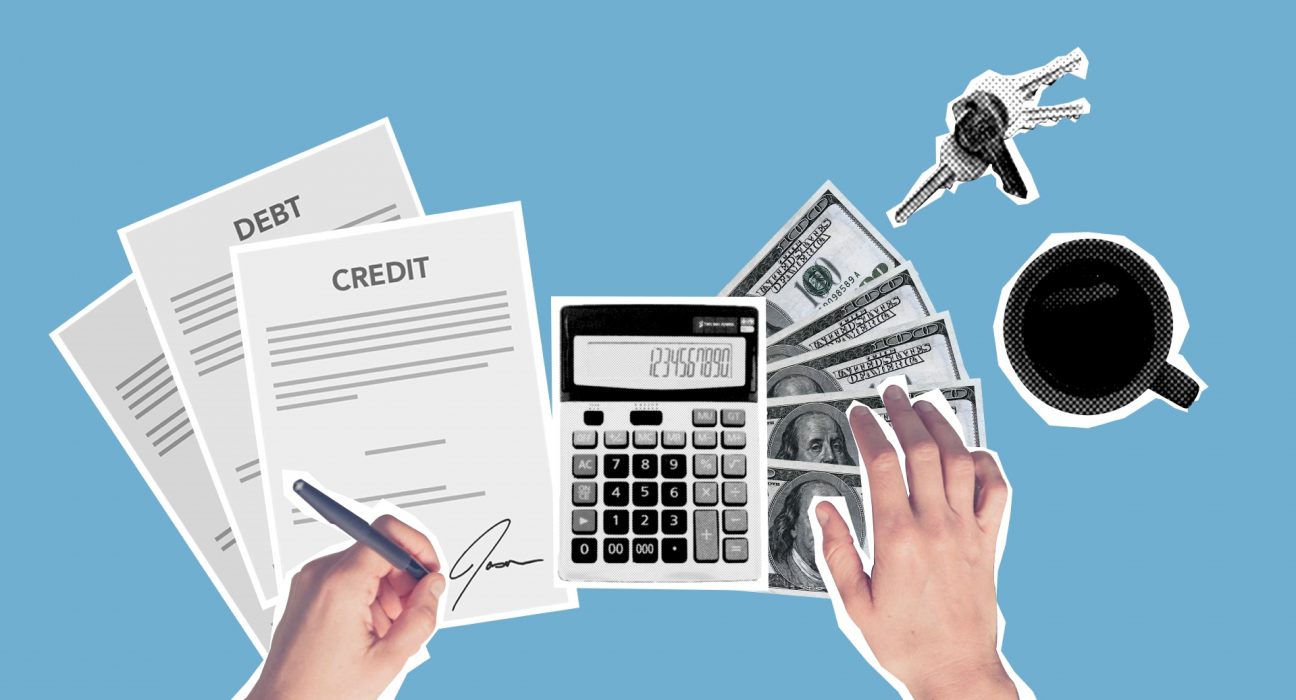In America, access to credit is not shared evenly. The possibility of receiving credit varies according to a person’s age, race, ethnicity, gender, and degree of income.
The greatest credit cards with low rates and generous benefits are frequently only available to those with high credit scores, who also have access to the lowest-interest loans. However, some demographics are less likely to have the credit ratings required for such financial product approval.
Financial injustices result from this, leaving various groups with unequal playing fields. Nevertheless, despite the variations between demographic groups, the desire to reduce debt and advance is something that they all share.
Credit score based on ethnicity and race
Compared to white Americans, people of color are less likely to have access to credit. In contrast to 72% of Black Americans and 76% of Hispanic customers, 87% of white consumers in 2020 held a credit card.
Asian Americans, however, defy this pattern. In actuality, 92% of Asian Americans in 2020 could have used a credit card. Actually, compared to other populations, white Americans and Asian Americans are more likely to have numerous credit cards. According to a study by The Ascent, both of those categories have an average of 2.1 credit cards compared to 1.8 for Latinos and 1.7 for Black Americans.
People of color tend to have poorer credit ratings than white Americans, which may be one factor in why they are less likely to have credit cards. Additionally, People of color are more likely to be “credit invisible,” or to have no credit history. In 2020, 18% of Black Americans, 15% of Latinos, 13% of White Americans, and 10% of Asian Americans had no credit score.
Asian Americans are least likely to have invisible credit, yet they are also most likely to be aware of their credit scores. In comparison to 69% of white Americans, 61% of Latinos, and 61% of Black Americans, 71% of Asian Americans are aware of their credit scores.
More information about the differences in credit scores by race and ethnicity can be found in a 2021 Urban Institute study. The median credit score for white Americans was 725 in October 2020, while it was 661 for Latinos, 612 for Black Americans, and 603 for Native Americans. It’s interesting to note that throughout the pandemic, credit scores rose for all demographics.
The survey also discovered that those with subprime credit scores tended to be more prevalent in communities of color. In communities with a high Native American population, 46% of people have subprime credit scores in October 2020. Then came 45% in communities with a majority of Black Americans, 32% in communities with a majority of Latino Americans, and 18% in communities with a majority of White Americans.
These results were consistent with a 2017 Urban Institute study that discovered the majority of the cities analyzed had median credit ratings of 600 or below, and that 50 out of 60 cities had median credit scores of 660 or lower. In contrast, just four out of the 60 cities investigated had median credit ratings that were lower than 660.
Credit score based on gender
When it comes to credit scores, there is no obvious winner in the gender battle. Men had an average FICO score of 705 in the second quarter of 2019 while women had an average score of 704. But historically, men have prevailed over women when they are single.
According to a Federal Reserve survey from 2018, single men aged 21 to 30 had a median VantageScore of 786 as opposed to 776 for single women in the same age range. The median VantageScore for single men aged 31 to 40 was 828 as opposed to 806 for women of the same age.
A 2019 study by the Center for LGBTQ Economic Advancement & Research found that LGBTQ people were more likely to identify as having “bad” or “very poor” credit (CLEAR).
In actuality, 16.1% of LGBTQ adults compared to 8.2% of non-LGBTQ persons described their credit in that way.
Compared to 9.8% of non-LGBTQ respondents who identify as female, 20.7% of LGBTQ respondents who identify as female reported their credit was “bad” or “very low.”
In comparison to 6.6% of non-LGBTQ male respondents, 12.3% of LGBTQ who identify as male reported having “bad” or “very poor” credit.
Some people’s access to credit is impacted by both their color and gender:
In comparison to 17.1% of Black non-LGBTQ people, nearly a third (31.3%) of Black LGBTQ adults reported having “bad” or “very low” credit. In comparison to 12.3% of non-LGBTQ Latino individuals, 18.8% of LGBTQ persons reported having “bad” or “very poor” credit. In comparison to 6.4% of non-LGBTQ persons, 13% of LGBTQ adults who identify as white reported having “bad” or “very poor” credit.
Low credit scores can make it more difficult for LGBTQ people to get credit. Consumers who sought for credit in the year before to 2019 had a rejection rate of 35.1% for LGBTQ applicants and 21.3% for non-LGBTQ applicants.
Credit score based on age
Wisdom and, allegedly, better credit come with age. The oldest Americans had the best credit scores, according to Experian’s 2020 Consumer Credit Review. The silent generation had and average FICO score of 758, baby boomers had an average FICO score of 736, generation X had an average FICO score of 698, Millennials had an average FICO score of 679, Gen Z had with an average FICO score of 674.

Millennials improved their credit scores the best among all age groups between 2019 and 2020. The average credit score gain for millennials was 11 points. Baby boomers saw a five-point increase, Generation Z saw a seven-point gain, Generation X saw an increase of 10, and the Silent Generation saw an increase of one point.
Historically, millennials have been cautious about taking on debt. Millennials reported $4,712 in outstanding credit card balances in the first quarter of 2019, which was lower than the national average of $6,028.
That may be changing, though, as the average credit card debt of millennials—those aged 23 to 38 in 2019—rose by 7% in 2019 compared to the previous year. Additionally, it seems like millennials accumulate debt as they become older. In Q1 2019, millennials aged 23 had an average credit card debt of $2,288 while those aged 38 had an average debt of $6,675.
The average credit card debt for members of Generation Z, who will be between the ages of 18 and 22 in 2019, increased from $1,851 to $2,057 between the first quarters of 2018 and 2019.
Credit scores based on income
Your ability to obtain credit may also be impacted by factors other than your demographics. Although there is conflicting research regarding how much of a function income genuinely plays, your income can also be a factor.
Higher income earners are more likely to have better credit ratings.
According to a Federal Reserve Bank of New York research from the first half of 2020, people with high incomes had a median credit score of 774. Additionally, the study discovered that consumers in lower-income areas had lower credit card ownership rates than consumers in higher-income areas.
A 2021 study by the American Bankers Association, however, contends that having a lower income does not automatically make one a riskier borrower. In households earning under $50,000, 22% of credit card users have superprime credit ratings of at least 780. In reality, 22% of credit card holders in lower-income families, defined by the study as those making less than $50,000 annually, have superprime credit scores, which are over 780.
Another third of cardholders with lesser incomes have prime credit ratings, which range from 680 to 780. Additionally, it doesn’t seem that cardholders with lower incomes are more likely than those with higher incomes to carry credit card debt from month to month. One-third of consumers with superprime credit and the lowest incomes are in credit card revolving debt. 55% of consumers with prime credit and the highest incomes have revolving debt. Although slightly less likely than the general public, consumers with lower incomes are also quite likely to use rewards credit cards, with 77% of lower-income cardholders having an active rewards card compared to 86% of cardholders overall.
In conclusion
When a person wants to finance unforeseen expenses, purchase a home, or even get a job, their credit scores can significantly impact their ability to advance in life. Although a person’s credit score ought to be a reflection of their previous financial behavior, the reality that some groups disproportionately have worse credit ratings and less access to credit begs the question of just how pervasive financial disparities really are.
Main source: creditcards.com
Other sources:
- Board of Governors of the Federal Reserve System: Report on the Economic Well-Being of U.S. Households in 2020
- Motley Fool’s The Ascent: Study: Race and Personal Finance in America
- Urban Institute: Credit Health During the COVID-19 Pandemic
- Urban Institute: The Financial Health of Residents
- Experian: Women and Credit 2020: How History Shaped Today’s Credit Landscape
- Board of Governors of the Federal Reserve System: Gender-Related Differences in Credit Use and Credit Scores
- The Economic Well-Being of LGBT Adults in the U.S. in 2019
- Experian 2020 Consumer Credit Review
- Experian: Millennials and Credit Card Debt
- Federal Reserve Bank of New York: The State of Low Income America: Credit Access and Debt Payment
- American Bankers Association: The Benefits of Credit Card Rewards




